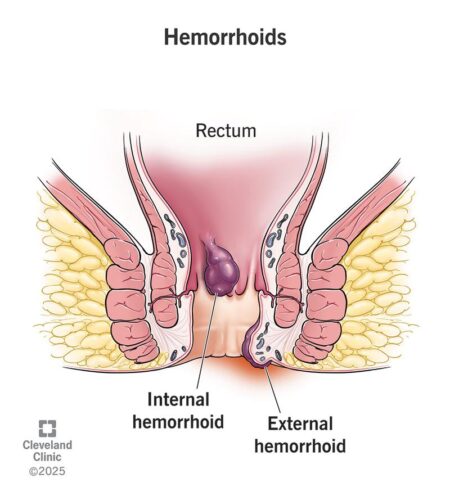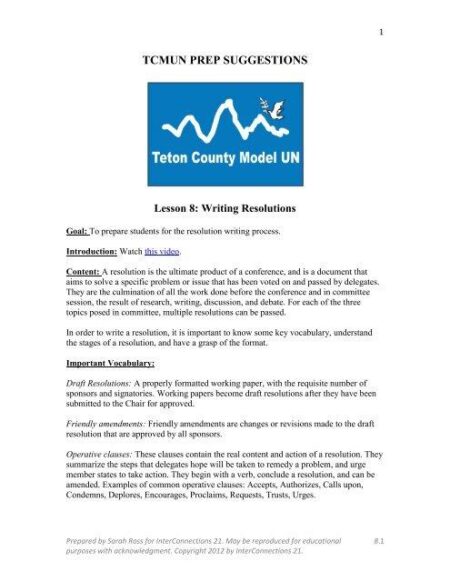Introduction
As the humanitarian landscape in the East and Horn of Africa,along with the Great Lakes Region,continues to grapple with multifaceted challenges,the United Nations High Commissioner for Refugees (UNHCR) has released its operational update for the period from October to December 2024. This report offers a crucial overview of ongoing refugee crises, displacement trends, and the responses initiated by UNHCR and its partners in this strategically significant area. Amidst escalating regional conflicts, climate change repercussions, and the residual impacts of the COVID-19 pandemic, the update highlights urgent needs for protection and assistance, shedding light on the tireless efforts made to uphold the rights and dignity of millions of people on the move. As the situation evolves, this article delves into key developments, the challenges encountered by UNHCR, and the essential support required to address the acute humanitarian needs of affected populations.
UNHCR Response to the Escalating Refugee Crisis in the East and Horn of Africa
The escalating refugee crisis in the East and Horn of Africa has prompted the UNHCR to intensify its response measures, ensuring that critical services are delivered to affected populations. With conflict and environmental challenges driving displacement, the UNHCR has deployed additional resources to affected regions.Key initiatives include:
- Emergency Assistance: Expansion of shelter, food, and health services in refugee camps and host communities.
- Partnerships: Collaborating with local governments and NGOs to enhance service delivery and support integration efforts.
- Protection Measures: Implementing strategies to safeguard vulnerable groups, particularly women and children.
These actions align with the ongoing goal to address the urgent humanitarian needs of over 4 million displaced individuals in the region. Additionally, UNHCR’s efforts include establishing safe spaces for women and children, providing psychosocial support, and ensuring access to education and livelihoods. The response strategy focuses on sustainability, aiming to foster resilience among refugees and host communities alike. A summary of key indicators highlighting the UNHCR’s impact is presented in the table below:
| Indicator | Number |
|---|---|
| Total Refugees Assisted | 1.2 million |
| Children Enrolled in Schools | 300,000 |
| Emergency Kits Distributed | 500,000 |
| Health Consultations Provided | 1 million |
Humanitarian Challenges Faced by Displaced persons in the Great Lakes Region
displaced persons in the Great Lakes Region face an array of humanitarian challenges that continue to deteriorate their living conditions. Conflict and political instability remain pervasive, leading to increased numbers of refugees and internally displaced persons (IDPs) across countries such as the Democratic Republic of the Congo (DRC), Burundi, and Rwanda. These individuals often live in overcrowded camps or makeshift shelters, lacking access to basic needs such as food, clean water, healthcare, and sanitation. Moreover, the ongoing violence not only exacerbates their vulnerability but also makes it increasingly arduous for humanitarian organizations to provide consistent aid and support.
Along with immediate survival needs, displaced persons are confronted with barriers to education and livelihoods, which stifles their long-term prospects for recovery and stability.Many children are out of school due to the instability, limiting their future opportunities and perpetuating the cycle of poverty. The growing number of unaccompanied minors also poses significant safeguarding challenges, as they are exposed to heightened risks of exploitation and abuse. Humanitarian agencies are actively working to address these concerns, yet the scale of the crisis requires a concerted effort from international partners and local governments to create an enabling habitat for sustainable advancement and peace-building initiatives.
| Challenge | Description |
|---|---|
| Access to Basic Needs | Lack of food, clean water, and sanitation services. |
| Education Disruption | Many displaced children are unable to attend school. |
| healthcare access | Inadequate medical facilities and healthcare services. |
| Security Risks | Heightened risks of violence, exploitation, and abuse. |

Regional Cooperation Efforts and Their Impact on Refugee Management
In the East and Horn of africa,as well as the great lakes region,regional cooperation has emerged as a pivotal strategy in managing the unprecedented influx of refugees. Through collaborative frameworks, neighboring nations have worked together to enhance the protection and support systems for displaced populations. Initiatives such as the Intergovernmental Authority on Development (IGAD) and the East African Community (EAC) are instrumental in creating a unified response that promotes shared obligation among member states. These platforms facilitate the exchange of best practices and mobilize resources for essential services, ensuring that refugees receive adequate assistance and protection. Key elements of this cooperation include:
- Joint Training Programs: Enhancing the capacity of border officials and humanitarian workers.
- cross-Border Coordination: Streamlining the approach to refugee registration and status determination.
- resource Sharing: Pooling together financial and logistical support for refugee camps.
Moreover, regional partnerships have significantly improved data sharing and analysis related to displacement trends. Countries are now better equipped to respond to crises with evidence-based interventions. A recent survey conducted by the UNHCR highlighted the positive impact of these collaborative efforts, demonstrating a significant decrease in refugee camp overcrowding and an increase in access to education and healthcare services for refugees. The following table illustrates the tangible outcomes of regional cooperation in refugee management:
| Outcome | Value (2024) |
|---|---|
| Reduction in Camp Overcrowding | 25% |
| Increase in Access to Education | 40% |
| Improved Health Service Coverage | 30% |

Recommendations for Strengthening Funding and Support Mechanisms
To enhance the effectiveness of humanitarian responses in the East and Horn of Africa, as well as the Great Lakes Region, it is imperative to adopt a multipronged approach for increasing funding and support mechanisms. Organizations and stakeholders should consider the following strategies:
- Partnership Development: Foster collaborations between governmental, non-governmental, and international agencies to pool resources and share best practices in funding.
- Innovative Financing Solutions: Explore alternative funding sources such as social impact bonds and diaspora investments to diversify financial inputs.
- Capacity Building: Invest in the development of local organizations to better manage and utilize funds efficiently, ensuring sustainability in operations.
- Increased Advocacy: Mobilize global advocacy campaigns to raise awareness about the needs in these regions, ensuring they receive adequate media attention and donor interest.
The establishment of a clear and accountable framework for fund allocation will instill confidence in potential donors. Creating a centralized tracking system that reports on fund usage and outcomes can strengthen trust among stakeholders. consider implementing the following measures to achieve this:
| Measure | Description |
|---|---|
| Regular Reports | Publish quarterly funding reports highlighting impact and future needs. |
| Auditing Processes | Engage self-reliant audits to validate fund usage and financial integrity. |
| Feedback Mechanisms | Establish channels for beneficiaries to provide feedback on services received. |

innovations in Aid Delivery and Community Empowerment Initiatives
In the backdrop of ongoing challenges in the East and Horn of Africa, UNHCR has prioritized innovative strategies to enhance aid delivery and foster community empowerment. Advances in technology are redefining how assistance is distributed, allowing for a more tailored and responsive approach. For example, the implementation of digital cash transfer systems has streamlined transactions, enabling refugees and displaced persons to access resources directly, thus bypassing traditional bottlenecks. Additionally, partnerships with local NGOs have strengthened grassroots efforts, ensuring that support mechanisms are culturally appropriate and effectively meet community needs.
The integration of capacity-building initiatives has been pivotal in empowering local communities. These initiatives focus on skill development and education, enabling individuals to reclaim agency over their circumstances. Key components include:
- Vocational training programs that equip refugees with marketable skills.
- Financial literacy workshops to enhance budget management and entrepreneurial ventures.
- Support for women’s cooperatives,promoting gender equality and economic independence.
Through these innovative measures, UNHCR not only addresses immediate humanitarian needs but also lays the groundwork for sustainable development, fostering resilience within communities that have been severely impacted by conflict and displacement.

The Role of Local Governments and NGOs in Addressing Refugee Needs
Local governments play a crucial role in the integration and support of refugees, acting as the first line of response in addressing immediate needs and creating an inclusive environment. They work in collaboration with NGOs to deliver essential services and ensure that the rights of refugees are upheld. some of their key functions include:
- Facilitating Access to Basic Services: Local authorities ensure that refugees can access healthcare, education, and sanitation, fostering a sense of stability.
- Community Engagement: by promoting dialog and understanding among local populations, they help reduce tensions and encourage mutual support.
- Resource allocation: Local governments frequently enough manage funds and resources, ensuring that aid is directed where it is indeed most needed.
Non-governmental organizations (NGOs) complement these efforts by providing specialized support and advocacy. They often have the expertise and experience necessary to address complex challenges faced by refugees, including legal assistance, psychosocial support, and vocational training. The collaboration between local governments and NGOs leads to enhanced protection mechanisms and tailored interventions. Key areas of focus include:
- Capacity building: NGOs work to train local staff and volunteers on refugee issues, strengthening the local response.
- Advocacy: They amplify the voices of refugees in policy discussions, ensuring that their needs and perspectives are prioritized.
- Partnership Development: NGOs foster networks of support among various stakeholders, including community-based organizations, to create thorough support systems for refugees.

The Way Forward
the UNHCR Operational update for the East and Horn of Africa, as well as the Great Lakes Region, underlines a complex landscape shaped by ongoing humanitarian needs and responsive interventions. As the region grapples with challenges ranging from conflict-induced displacements to climate change effects, the UNHCR continues to play a crucial role in addressing the plight of vulnerable populations. The insights provided in this report reflect not only the urgent needs on the ground but also highlight the efforts being made to enhance protection and support for refugees and internally displaced persons. Moving forward, sustained international attention and resources will be vital in ensuring that effective responses are maintained, fostering resilience and hope for affected communities. The ongoing collaboration between governments, NGOs, and the UNHCR remains essential in navigating the path towards durable solutions, emphasizing the need for collective action in these unprecedented times.as we look ahead to the next quarter,it is imperative to remain informed and engaged,ensuring that the voices of those affected are amplified in global discussions surrounding humanitarian efforts in this critically crucial region.







